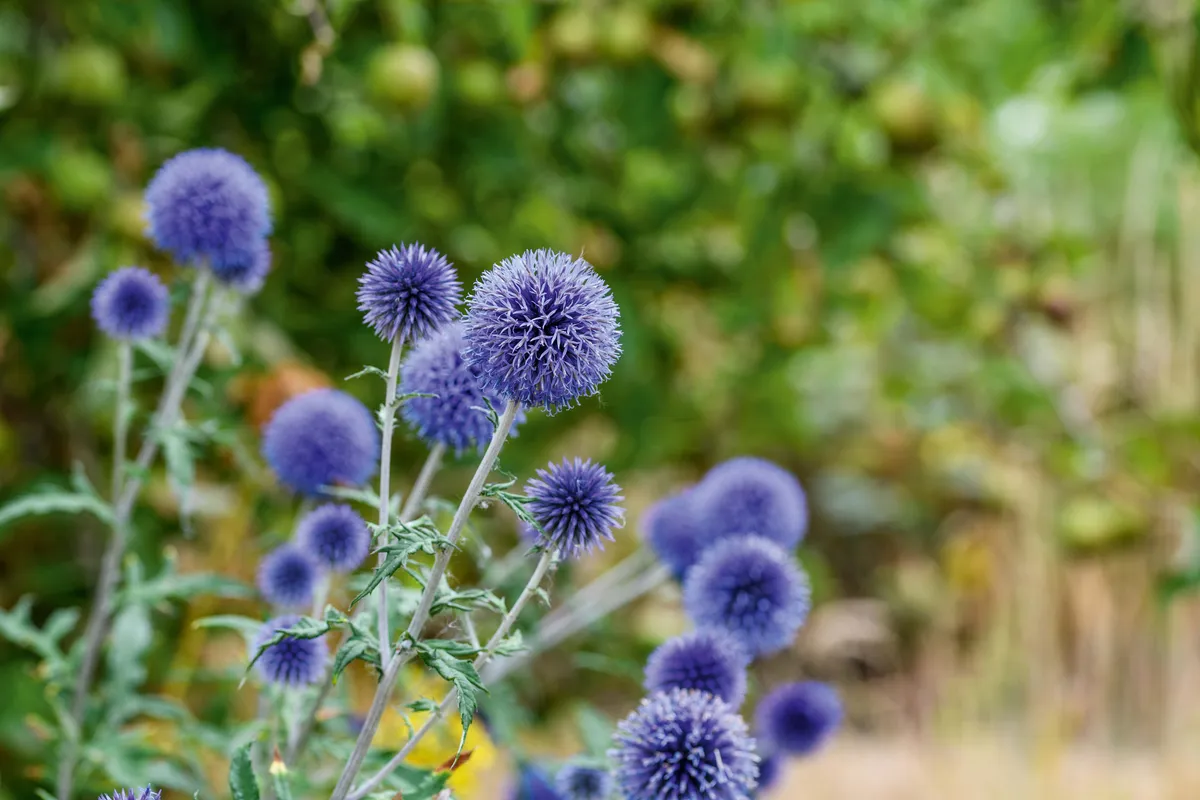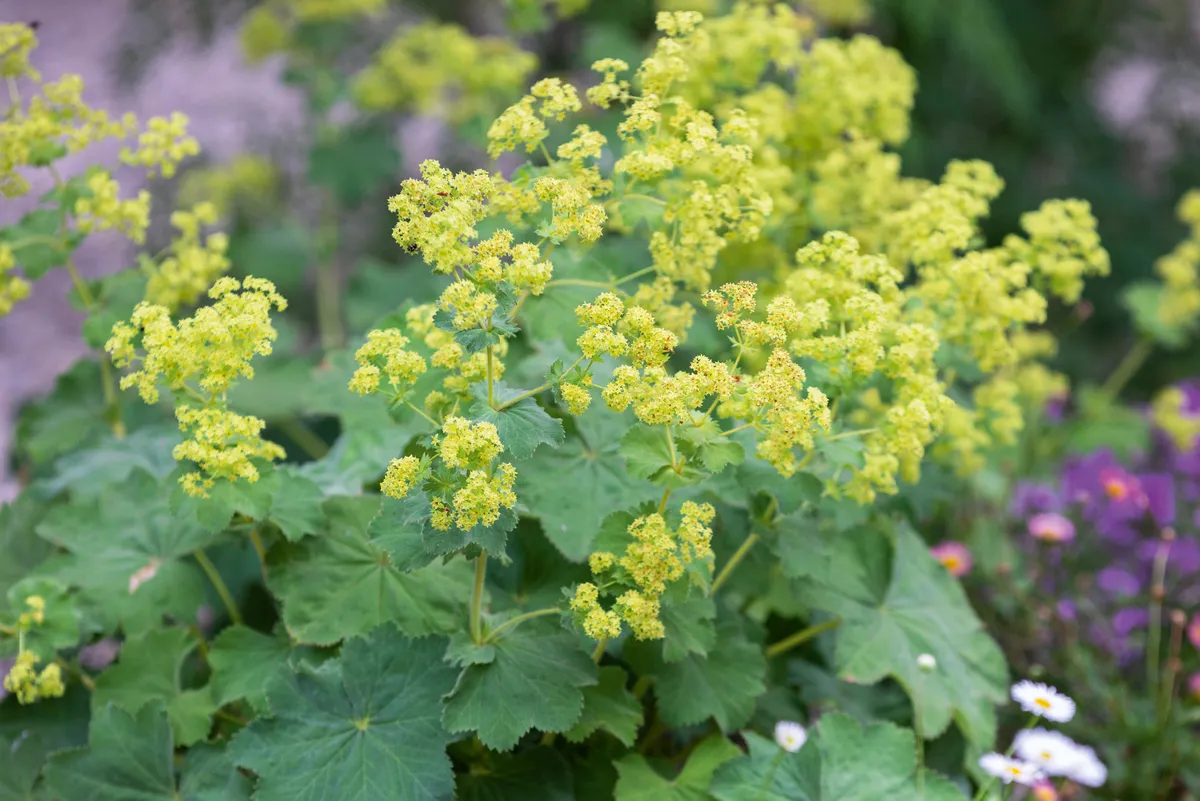Dried flower arrangement are seeing a revival in interest, with huge bouquets of delicately coloured bunches covering the walls of the trendiest of venues and floral artists such as Bex Partridge creating stunning arrangements.
You may also like
- How to dry flowers
- The best dried flowers to buy
- Bex Partridge's beautiful dried flower creations
- The best flower presses and how to press flowers
But drying flowers isn't as simple as just cutting whatever is in your garden and hanging them upside down. There are specific blooms that will keep their colour and last for longer.
Here, three expert growers recommend the plants that are best for your dried flower bouquet, so you can grow the right sort for your needs. Don't miss our guide on how to dry flowers
- Chosen by: Roisin Taylor (RT), a cut-flower farmer and florist at Verde Flower Co who grows on a small plot beneath the Tyne Bridge. verdeflowerco.org; Carolyn Dunster (CD), Carolyn is a botanical stylist, planting designer and garden writer. Her latest book, A Floral Feast, is out now. @carolynrdunster and Erica Randall (ER) Erica is head gardener at Priorwood Garden in Scotland, which has a long history of growing flowers for drying nts.org.uk
The best flowers for drying to grow in your garden
Echinops ritro ‘Veitch’s Blue’

A bee magnet and eccentric dried flower, this perennial is a must in the garden. Harvest for drying when the tiny petals have fallen off, then bunch and hang up. Use on its own or with wispy grasses in winter for a dramatic dried bouquet. Height and spread: 1.2m x 50cm. RHS H7, USDA 3a-8b†. RT
Here's more on how to grow Echinops
Nigella damascena

A hardy annual with delicate flowers and sculptural seedheads for drying. Sow where you would like it to flower, in a sunny spot in well-drained soil. Use these seedheads for buttonholes or tiny bud-vase joy in autumn and winter. 50cm x 50cm. RHS H3, USDA 2a-11. RT
Cota tinctoria

This sprawling, rather weak perennial is a beautiful sun-like dried flower and generates a golden dye colour for fabrics, hence its name. Sow and plant out before the last frost in spring or autumn. Plant in well-drained soil and water well for plenty of flowers. Bunch and hang out of direct sunlight. 70cm x 50cm. RHS H6, USDA 3a-9b. RT
Alchemilla mollis

My favourite dried filler flower, bringing wispy goodness to any arrangement. An unfussy perennial, it grows happily in most conditions with well-drained soil. Cut armfuls and create plumes of dried flower clouds for an autumn tablescape. 50cm x 50cm. AGM*. RHS H7, USDA 3a-8b. RT
Delphinium consolida

An annual that’s easy to grow, but its seeds need a period of cold stratification to germinate well. Harvest for dried flowers when colour shows on petals. Bunch and hang upside down with good airflow and minimal light. 1m x 50cm. RHS H6. RT
Papaver somniferum

One of the great delights of my garden. Seedheads that dry bone white, with a sculptural flair. These annuals could not be easier to grow – chuck the seeds anywhere and wait for their rattling heads. Self seeds. Sow in dry, poor soil, preferably in full sun. 1m x 50cm. RHS H5 RT
Here's more on growing papaver
Phalaris canariensis

This hardy annual is my favourite grass to dry. Sow directly in spring after danger of frost has passed, in full or partial sun. Cut and store in a dark, dry place to retain colour, or in direct sun to bleach to bone white. 90cm x 40cm. RHS H7. RT
Astrantia major ‘Ruby Wedding’

Darker cultivars keep their colour longer; paler cultivars turn brown quickly when exposed to light. The heads close slightly as they dry, but take on a lovely papery texture and add an airiness to arrangements. Harvest in full bloom and strip off foliage. 50cm x 50cm. RHS H7, USDA 4a-7b. CD
Miscanthus nepalensis

All miscanthus are good for drying. Harvest flower stems as they appear in late summer, along with the foliage, and arrange in a vase in 2cm of water. After a couple of days, the flowerheads will have turned into fluffy plumes and the leaves will gradually turn from green to shades of bronze. 1.5m x 1.2m. RHS H6. CD
Here's more about growing miscanthus
Achillea ‘Moonshine’

Once properly dry, the flat-headed clusters change colour to a deep, long-lasting burnished gold. For long, straight stems, pick at the base of the plant as they are beginning to stiffen and heads are fully formed, which can be several weeks after initial flowering. 60cm x 60cm. AGM. RHS H7, USDA 3a-8b. CD
Bistorta officinalis ‘Superba’

All bistorts lend themselves to drying and can be picked at different stages of flowering for a pretty display of pinks through to crimsons. The flower spikes change colour as they mature. 90cm x 90cm. RHS H7, USDA3a-7b. CD
Here's more on bistorta and the best cultivars to grow
Chasmanthium latifolium

Flowerheads appear in late summer as bright-green spikelets, then gradually turn a deep golden brown, which is when to harvest for an autumnal display. They require no extra drying. 50cm x 50cm-1m. RHS H7, USDA 3a-8b. CD
Rosa ‘De Resht’

Claret, burgundy or deep-pink roses such as this are best for drying. Orange and yellow hues will also hold their colour, but whites and very pale pinks tend to fade quickly to brown.
90cm x 80cm. RHS H6, USDA 5a-9b. CD
Wondering how to dry roses?
Anaphalis triplinervis

We grow this and A. margaritacea at Priorwood Garden. Both are easy to grow and easy to dry by hanging upside down in a cool, dark shed. Great to add volume to a dried bouquet. Happy in any aspect. 50cm x 60cm. RHS H7, USDA 3a-8b. ER
Briza maxima

An annual grass with much larger seeds than its perennial cousin Briza media. Great for adding texture to any dried flower arrangement. Carefully remove excess foliage and hang upside down to dry. We grow it in a south-facing bed. Self seeds. 75cm x 20cm. RHS H6. ER
Amaranthus ‘Red Army’

Love-lies-bleeding comes in many shades from green through to deep red, but I love these spikes of rich burgundy. Remove all leaves before drying as they crumble once dried. We start off seeds in the glasshouse and then plant out after the last frost. 1m x 50cm. RHS H2. ER
Luzula nivea

A clump-forming perennial and beautiful plant to grow in a moist, shaded or partially shaded position. At Priorwood, we grow it in our woodland area. Pick flowers just as they open to keep their shape and prevent the cream flowers from browning. 60cm x 20cm. RHS H5. ER
Cerinthe major ‘Purpurascens’

This hardy annual is a wonderful foil to other flowers and works as great substitute where eucalyptus might be used. We sow it direct in a sunny border where it will happily self-seed around. 60cm x 60cm. RHS H3. ER
Cynara cardunculus Scolymus Group

Purple thistle heads appear on top of silver foliage. Great for attracting pollinators, and, if they are cut just as the flowers emerge, the stems keep their colour when dried. Requires a sunny aspect and good support to prevent tall stems from keeling over. 1.8m x 1.2m. AGM. RHS H5, USDA 7a-9b. ER
Glycyrrhiza yunnanensis

Produces small lavender flowers in the summer, and then fuzzy seedheads that stand well into winter. They look fantastic in the vase and contrast nicely with paler, faded flowers such as honesty and round allium seedheads. 1.5m x 1m. RHS H5, USDA 6a-10b. ER
Read about pressing flowers with JamJar Flowers